Palace Personalities - Later Memoirs of Anna Vyrubova
Rare Memoirs of the Alexandra's Best Friend
Suuri Suomalainen Kirjakerho
Helsinki 1987
Part One
...To tell the truth, the Tsar was rather weak and lean. When he was sitting it seemed he was well-built but in fact he was not even of medium height because of his short legs. Nevertheless, he managed to harden his organism by sports and physical exercise in fresh air and develop physical strength. The heir's disease was a hard blow for the Tsar and the Tsarina. It won't be an exaggeration to say that her son's disease told badly on the Tsarina's health and she could never get rid of the feeling that she was responsible for her son's illness. The Tsar himself grew many years older in a year's time and people who were close to him could not but notice that his mind was never free from disturbing thoughts.
I remember a beautiful angelic-looking child with golden hair and charming meaningful eyes. But the slightest injure caused bruises all over his body. The heir was very well looked after and guarded but it didn't always help as the child was very lively and when he hurt himself he cried the whole nights through.
I remember the Tsarina was always anxious when some important foreign visitor was expected - she tried hard to make Aleksey look a healthy child. At first they kept his disease secret as all hoped for his recovering. Once, just before the Kaiser was to arrive, the boy fell down in spite of all the precautions and got a big bruise on his forehead. Of course, the Kaiser understood at once what the matter was as his brother's (Prince Henry) two or three sons suffered of the same disease.
I have already mentioned that my first days in the Palace coincided with a period of a great historic importance for the country. Everything looked gloomy. The halls of the Winter Palace that had seen so many splendid balls and festivals were turned into workshops. It was on one of those days that the Grand Duke Sergey Alexandrovich was killed.
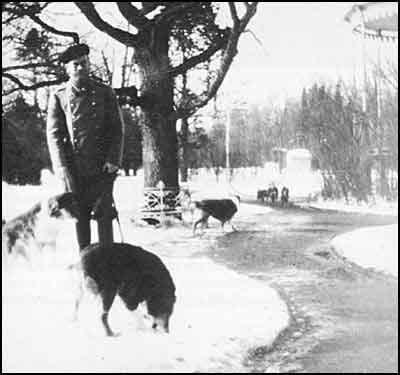
The Tsar's family did not like to live in St.Petersburg when their presence there was not necessary. Tsarskoe Selo was much more attractive for them with its fresh air, its beautiful parks with artificial lakes and winding alleys. The Tsar had 11 big dogs -long-haired Scottish sheep-dogs. A special house was built for them not far from the Palace. Going out for a walk the Tsar gave a loud whistle and they all ran to him. At the very beginning of my service for the Empress I once met the Tsar on one of the narrow paths of the Alexander Palace park. The sight of the dogs frightened me very much. They didn't attack me but started to smell at me suspiciously.
The Tsar who was some distance away cried: "Don't be afraid! They won't touch you." The Emperor always tried to use the 15-20 minutes break between two receptions to take a walk and breathe in fresh air and he didn't have time to stop for conversation. The Tsar once had a dog, Iman by name. He lived in the Palace. When the dog disappeared the Tsar did not want to take another dog instead of Iman as he was very attached to him.
Religion and love for music brought the Empress and myself close together. We often played the piano in four hands or sang in duet. The Tsarina possessed a beautiful low voice and I had a high soprano as I have already mentioned. The Tsarina had a good ear for music. Just one glance at the notes was enough for her to play or sing the music. Professor Iretskaya used to say that the Tsarina could have earned a good living by singing. The Tsar was also gifted for music but he kept saying that music was good only in its place and time; he was ready only to listen to it. He especially hated musical exercises and we often went to the Small Palace when in Peterhof not to annoy him as in the Grand Palace the piano was situated close to his study. And what's more he didn't approve of the Tsarina's singing.
Another thing that brought us close to each other were the Tsarina's children. And when after my divorce I was invited to serve in the Palace again my first joy was to visit the nursery. I didn't serve for money and I must say I was for the Empress her child and her sister at the same time; we became very close friends. I was 12 years her junior.
Summers on the Finnish Archipelago
When I start recalling my life at the Court my thoughts turn unwillingly to gloomy things. My memory is full of horrors which the Emperor and the Empress had to go through. But my mood changes and I begin to smile when sitting alone in my room I start remembering my summer vacations spent with the Tsar's family in Finland.
I first visited Finland in 1905 on the Tsar's yacht the "Polar Star". We spent about two weeks in Koivisto. It was at that time that our friendship with the Tsarina was born, the friendship that lasted 12 years. The "Polar Star" belonged to the widowed Empress and many thought, of course, that it was splendid, though in comparison with luxurious yachts of American millionaires it was a very modest ship. Then I visited Finland 9 times more when I accompanied the Tsar and the Tsarina on the royal yacht "Standard". Those stays were longer than the first one - they usually lasted about 2 months.
The life on the "Standard" can never be called unofficial. The "Standard" was much larger than the "Polar Star" and looked like a sailing palace. The crew consisted of 200 people. In spring of 1918, during the Civil War in Finland both yachts were harbored in Helsinki.
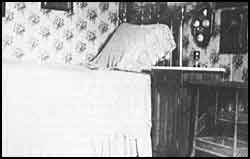 Left: The Tsarina's bedroom on the Standard
Left: The Tsarina's bedroom on the Standard
The Tsar and the Tsarina had their own apartments on the yacht. It was a comfortable house. The Tsarina had a bedroom and a small study the walls of which were covered with chintz. The Tsar had a study and a bedroom with a bathroom. Between their apartments there was the so-called Green Living Room which was at the same time Music Room. The nurseries were in the opposite end of the passage. A big dining-room with a long table was on the upper deck. It could easily seat 40 people. The Tsar always sat at the head of the table.
Everyday life on the "Standard" was not very different from the life on shore but its official side was considerably reduced. Of course, the Tsar could not completely stay away from giving audiences.
Two times a week he received various reports. Standing on the upper deck the Empress and I used to watch the Tsar cut the envelopes open and throw them into the sea. The Tsar had very few officials to accompany him on the yacht as he wanted to give his family a good rest.
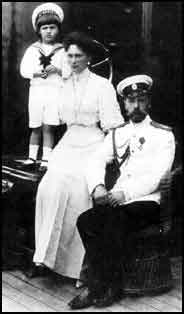 Right: The Tsar, Alexandra and the Tsarevich Aleksey onboard the Standard
Right: The Tsar, Alexandra and the Tsarevich Aleksey onboard the Standard
The Tsar and the Tsarina would go ashore from time to time. A small steam-boat took the family to shore of the mainland or of one of the islands; thus they gave themselves a chance of complete relaxation and rest of the official side of their life.
All the things we saw which were just ordinary for any Finn, were for us full of interest. We listened to the sound of waves dashing against the rocks, walked in the woods picking up wild berries and flowers and stopping sometimes to have a picnic. The Tsar inherited his love for Finland from Alexander III and Maria Fyodorovna who visited it each summer.
Alexander III was a heated fisherman and the Rapids of Langinock were his favorite fishing spot. Nicholas II didn't like fishing and seldom ate fish. As far as I remember we visited those rapids only once and spent a wonderful day there. The Tsar loved the sea and swimming, he also liked to stop for some time in some place before getting to the next island. On the archipelago he went in for shooting. The Emperor was a good swimmer and he devoted every moment of his free time to that sport. The Empress was the only one from the family who could not swim because of her weak heart. The Tsar liked long walks. He used to go for 2-hour walks choosing the most difficult paths.
I remember those summer trips in every detail. I remember my first morning tea on the Imperial yacht. I remember the Empress wearing a small white straw hat and a white English blouse with a black bow and big diamond ear-rings and rings. I see her pouring tea and chattering merrily with the Tsar. The Tsar used to call her "my little sun" - at that time that name especially matched her. She turned her tender gleaming look to her children and talked to the Tsar about them. On the yacht the Tsar was a different person. In his white naval jacket he looked healthy and happy.
When the Tsar's family disembarked in Russia it used to be accompanied by guards. The name of each person who approached or addressed the Tsar was registered. If it was an unknown person they put down his characteristic features to identify him if necessary.
It was quite different in Finland. Though they carefully explored and inspected the supposed place where the Tsar would stop, but a permanent and unpleasant guard that was a rule in Russia was not needed in Finland.
The Tsar's family could enjoy nature as freely as all other human beings.
When the yacht reached the shore of the archipelago or some island, the Tsar and the Tsarina often went to visit one of the nearest villages to talk to peasants. The population of Koivisto and the Eastern arm of the Gulf of Finland could speak some Russian as those places often had visitors from St. Petersburg. Those village supplied St.Petersburg with agricultural products and the peasants often went to the Russian capital to shop. It drew 2 or 3 thousand Finns from the coastal villages closer to Russians and it was easy for the Tsar and the Tsarina to deal with them.
Once walking there the Tsarina and the children entered a small clean cottage and found an old woman there sitting at the spinning wheel. The old woman was not prepared for the visit and was surprised. The Tsarina stroked her on the head and showed interest in her work. The old woman soon understood who her guests were, smiled and curtseyed. She made coffee for the Tsarina and the children and served it with home-made bread.
The Tsar also liked to talk to peasants and fishermen. He was fond of talking to common people who were devoted to him and hated diplomatic conversations.
We also visited other parts of the Gulf of Finland and the Baltic Sea reaching as far as Riga on the "Standard". That yacht was good enough to go on sea-voyages and it reached the shores of England and France not once. During one of such voyages around Europe the "Standard" once stopped in Yalta on the shore of the Black Sea.
Once when sailing on the "Standard" we got in an accident. We had a Finnish pilot and a captain whose name was Libek. We were followed by a Finnish steam yacht which belonged to the Pilot Institute of Finland. On that day we were passing by the archipelago Ganko. The weather was fine. We were all having tea in the Big dining-room. A brass band was playing. Suddenly we felt a terrible push. It seemed, the yacht jumped up in the air and then fell down on the water again. Then it stopped and its port side began to heel over. Everything happened in a second - the dishes and the vases with flowers were on the floor.
The Empress cried out in horror, the frightened children trembled and cried but the Tsar was calm. He explained to us that we had struck a reef. The alarm was sounded and all the crew of 200 people ran up on deck. A huge sailor Derevenko took care of the heir. He was hired to look after Aleksey and save him from hurting himself. Derevenko seized the boy and ran to the ship's bow with him. He was quick to realize that the boilers were situated right under the dining-room and that part of the yacht was the first to be damaged. We were all standing on deck. The port side of the yacht was sinking and any movement on the deck became impossible. Fortunately, the yacht got stuck on the reef - its shape prevented the yacht from heeling and its port side struck a rock and made it stop. But there was a hole in the yacht's side and the water ran inside. If the yacht had come off the rock we would have been drowned. The "Alacoon" helped us move on board the collier "Asia". We wrapped the things we could save in sheets.
The "Asia" was a big ship. The Tsar's family occupied several cabins there. To tell the truth, those cabins were far from being luxurious. I remember all of us gather in the lounge at about midnight to eat a rather poor dinner - Cubat served it in the lounge.
The Tsar himself brought a basin of water to wash our hands. We spent the following two weeks on the small but rather comfortable yacht "Alexandria" in Riilahti. A thorough inspection of the yacht was done to find out what had caused the accident. I don't know anything about the results of the investigation. I only know that Admiral Nilov, Takhaguin, the "Standard's" captain and captain Lubeck were brought to trial. The Emperor pardoned all of them.
I am sure that Finland was always spoken of and remembered with warmth in the Tsar's family. When the heir grew up a little he often asked when he would go to Finland again on board the "Standard". The Empress used to tell me that her best memories of the happiest days of her life are associated with Finland. I never doubted that she was telling the truth - her life was usually very hard.
The Tsar was always in good mood when he came to Finland but when he was leaving it there were tears in his eyes. He once told me as a joke: "These are the first tears you see in the eyes of your Tsar". The Tsar and the Tsarina used to visit Finland every summer and now when I am writing these lines having lived here for 17 years, I understand that they couldn't but feel instinctively the purity and the honesty of this land. The severe beauty of its nature couldn't but touch their suffering hearts. They used to come back home fresh and the heir's health usually improved after those trips.
Life at Court during the War with Japan
 Left: The children's Christmas tree in the upstairs Playroom, after 1902
Left: The children's Christmas tree in the upstairs Playroom, after 1902
...On Christmas there were usually three fir-trees decorated in Tsarskoe Selo - there was one downstairs in the Empress's Big Living Room, another one upstairs in the nursery and the third one also upstairs in the passage and was meant for the Palace's servants. The first fir-tree to be lit was that in the nursery and it was the time when the children got presents. Sometimes their presents were very expensive but the Tsar's children never thought of how much they might cost. They were equally happy when they got a small crafted thing or a cheap toy. They could use their costly presents only during official ceremonies.
Aleksey was often given tin soldiers, miniature tanks, etc. He liked to play with them and Anastasia who was three years his senior and a naughty child, used to tease him breaking the even rows of soldiers after which she stood in the posture of a victor on the battle field. At first Aleksey got very offended but then he stopped paying attention to his sister's tricks.
Once Aleksey got a clockwork train for Christmas. He and his father often played with it making it stop suddenly between two stations or making train crashes, etc.
The second fir-tree to be lit was that for the servants. They also got presents - souvenirs and money. Later the same evening the Tsar and the Tsarina went to the Big Living Room to their fir-tree. They usually got a lot of presents from their relatives living both in Russia and abroad. The Tsarina sent her maids-of-honour a miniature fir-tree and gifts.
The holiday was crowned with a church service. The Tsar and the Tsarina took their children either to St.Petersburg to the church of the Anichkov Palace, residence of the widowed Empress, or to Gatchina if the widowed.Empress was there. On the next day the fir-tree was lit in the Manege of Tsarskoye Selo for the regiments guarding the Palace. Each private got a gift of silver money; officers got costly presents. The presents were handed to them by the Grand Duchesses.
Easter holidays were usually very solemn. Before the war there was usually a church service in the Winter Palace that was followed by a gala reception. When the Tsar's family was in Tsarskoye Selo or in the Crimea the service took place in the palace's church. The Tsar and the Tsarina usually began to fast 6 days before Easter. On the Easter table there were Easter cakes, paskha and, of course, a lot of painted eggs.
According to the Russian tradition after the Easter service and on the days of the holiday all exchange a triple kiss (Easter salutation). On Easter Day, no matter where it was celebrated in Tsarskoye Selo or in the Crimea, the Tsar exchanged triple kisses with soldiers. I remember how we were standing behind a glass door and watching a ceremony taking place in the Small Palace in Livadia. The Tsar who was short had to stand on tip-toes to exchange a triple kiss with a tall guardsman and the latter was bending down carefully towards the Emperor. Some of them tried shyly to slip a red Easter egg into the Tsar's hand; he gave the soldiers porcelain eggs with his initials.
The Empress was busy in a different place. She exchanged triple kisses with school-girls and gave them Easter eggs with her initials.
They also exchanged triple kisses in the Palace. The Tsar and the Tsarina kissed all their subordinates.
The Tsar kissed me for the first time when I was playing with the children in the nursery. He entered the room and kissed everyone. Those who don't know how the Emperor was revered in Russia in those days, cannot understand what a great honour a Tsar's kiss was. I was shaken. The Tsar's family was not supposed to go shopping either in St.Petersburg or in Tsarskoe Selo. But in the Crimea, especially on rainy days, when the streets were almost empty, the Tsarina and the children went to Yalta (4 or 5 miles from the palace). They left their carriage in one of the side streets and went to the embankment where there were a lot of stores. Once in the shop which belonged to Sembinsky who sold old pictures, frames, etc. the Tsarina put her wet umbrella in the corner where some rubbish was placed and started looking at the things displayed there. Suddenly Sembinsky cried out - "Madam, how could you dare to put your wet umbrella on my goods!" At that moment he turned his head to the window and saw a big crowd of people gathered at the shop - they tried to look inside and to follow each movement of the Tsarina and her children. They watched them with great interest. Poor Sembinsky understood who his customer was and got pale. The Tsarina laughed. We could hardly make our way through the crowd of people who stayed there in spite of the rain hoping to see the Tsarina and her children. On their way to the carriage the Empress and the children shook many hands. Many wanted to have souvenirs - buttons of the Empress's coat and pieces of her handkerchief.
The Tsar's children didn't know the cost of money. They seldom had the money of their own with the exception of the excursions of the kind as described above. I remember their surprise when the owner of the shop gave them some change. They wanted to know why he hadn't taken all the money.
1913 - 1914
...As a matter of fact, even at the beginning of 1914 nobody in Russia considered the possibility of war. The Tsar's family and myself spent that spring in the Crimea. We played tennis and other games and went on long walks to the mountains as before. That spring they got interested in automobiles - it became their new hobby. The Tsar bought a high-speed motor-car driven by a French chauffeur. My heart sank to my boots when I seated myself behind the driver who started the car and we rushed along the mountain roads like mad people. Fast driving was the Tsar's passion.
The Tsar also liked to go to Kozmodemyansk where he had a hunters' cottage high up in the mountains. That was a preserve which provided him with good opportunities for hunting deer. He usually went there accompanied by his two elder daughters.
Not far from the hunters' cottage there was a small monastery with a source in the yard that was called St.Nicholas source; the local Russian and Tartar population believed that its cold water was very healing. The Emperor and the children once dipped themselves into its waters to follow the pilgrims' example.
The Empress organized several hospitals for T.B. patients that were partly supported with the money got at the charity fairs that she often organized. The Empress and the children sent there their embroideries made after their own designs and the Empress's brother, the Duke of Hessen-Darmstadt often sent them beads and balls of all sizes and colours to make different ornaments. The Tsar's family used them to make charming necklaces.
Such fairs took place in Yalta each year. During the last fair its kiosks occupied the whole embankment. The Tsarina stood for hours on end behind the counter (though doctors ordered her full rest because of her weak heart) selling different things to numerous public who came there just to have a look at the Empress. Among the were the Tartars who had left their fortresses in the mountains and came down just to look at her. I saw how thousands of roubles in kopecks and small notes travelled from hand to hand. At the end of the fair the Empress, tired but happy, put the heir on the counter as he was giving people charms and other knick-knacks. The enthusiastic crowd loudly expressed their approval of the Empress and her son. As before, that year they collected a big sum of money for the hospitals...
The Storm Broke out
...The die was cast. To declare war the Tsar and the Tsarina had to go to St. Petersburg to the Winter Palace. The halls of the Winter Palace were full of people. Everyone who had a chance to get to the Palace used it. A crowd consisting of many thousands of people surrounded it. When the Tsar went out onto the balcony all and one went down on their knees.
When the war was declared all the courtiers gathered in the Nicholayevski Hall where the Tsar was to receive thousands of officials, ministers and noblemen. The Tsar made his famous speech which contained the following words: "I solemnly declare here that I shall not conclude peace until the last enemy soldier leaves our homeland."
Then a service took place. The hymn "To Thou Lord" reflected against the walls of the Palace was received with exultant cries of the crowd.
The Empress Alexandra Fyodorovna walked beside the Emperor holding his arm with her eyes full of tears. Standing in the doorway of the Malachite Sitting Room I touched her hand when she was passing by, we looked at each other and read understanding in each other's eyes. Her weakness didn't last long. On the next day she was a new person who forgot about her illness and weaknesses. She started organizing storehouses for linen, hospital and hospital trains equipment. It was important to do it fast. The Empress understood that thousands of badly wounded soldiers could start arriving after the first battle. She planned to create a network of hospitals and medical centres from St.Petersburg to Khatkov and Odessa in the south of Russia. One could not believe his eyes when he saw how strong the Empress was and what a great talent for organizing she possessed. She could forget all her troubles for the sake of others.
The Tsar left to watch the first echelons go to the front.
But let's get back to the hospitals. I went to say good-bye to my brother who was leaving for the front and then hurried back to the Empress who needed my help in her work. By the time of my brother's departure there had already been organized 10 hospital trains bearing the names of the Empress and her children; about 25 hospitals were opened in Tsarskoye Selo, Peterhof, Pavlovsk, Luga, Sablino and other close-by towns. The Empress, her two elder daughters and I worked as nurses under the supervision of the lady-doctor Guedroits. Every afternoon we studied theory, every morning we worked in the hospitals.
One may think that our work was a sort of game. But it was far from that. I shall describe one of our mornings to illustrate that. That morning I helped the Empress and the Grand Duchesses Olga who was 19 and Tatiana who was 17. It should be said that by that time we had had only two weeks of studies. We came to the hospital at 9 p.m. and went right to the operating-room where they brought the wounded taken from the trains coming from the front. Words fail me to describe their condition. Their clothes were just rags soaked with blood. They were covered with mud from head to toes, many of them did not realize if they were dead or alive; they were suffering of terrible pain.
We washed our hands in the disinfection solution and got down to work. At first we needed to undress the wounded, better to say, to take off their muddy rags. After that it was necessary to was their crippled bodies and injured faces, to clear the eye-sockets often filled with a bloody mass. Yes, we could appreciate the modern war with its most civilized methods of destruction from the horse's mouth! Experienced nurses helped us with their advice and soon the Empress became a first-class nurse. I saw the Empress of the whole of Russia standing at the operating table with a full syringe in her hands, handing the surgeon his instruments and assisting at the most serious operations, taking the amputated extremities from the surgeon's hands, taking off the soldiers' lousy clothes, breathing in the stench and watching the horrors of a military hospital at war-time compared to which an ordinary hospital looks like a peaceful and quiet shelter. Since that time I saw much grief, I spent three years in Bolshevik prison but it was nothing compared to that horrible experience in the war hospital.
The Empress told me once that only once in her life she felt genuine pride when she received her nurse's certificate. The Grand Duchesses Olga and Tatiana as well as myself successfully passed those exams, too.
They tried to entertain the wounded in the hospitals; different games and concerts were organized for them. The Empress was in charge of those activities in Tsarskoe Selo. The heir also often visited the hospitals with his two younger sisters. The hospitals bore their names but they were still too young to work in them. The Grand Duchesses Maria and Anastasia knew all the wounded and always tried to entertain them. I didn't approve of the way the wounded officers treated the Grand Duchesses - they often called them and asked them to sit down on their beds to talk to them. In the evenings the Grand Duchesses often brought to the hospitals their needle-work. I am afraid they heard a lot of stories from the officers of dubious character.
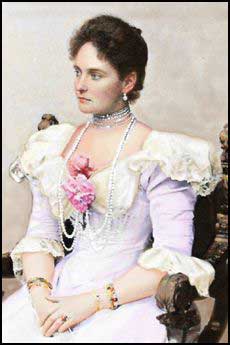 Right: The Empress Alexandra
Right: The Empress Alexandra
The Empress had an in-born talent for the nurse's work. When looking after the wounded she seemed to fill the surrounding atmosphere with her tenderness and willpower; everyone was drawn to her as if by instinct. Even before the war she was always with those who were sick and where her help was needed. When the Tsar fell ill with typhoid in Livadia - it was at the beginning of his reign when the Empress was bearing their first child- she took care of her husband day and night in spite of her condition not willing to leave him for a moment with a servant or even a doctor. In 1907 Anastasia fell ill with diphtheria. Having sent the family to Peterhof the Empress took care of her sick daughter herself until the girl recovered. During the whole month when Anastasia was sick she would let no one approach herself and only in the evenings the Empress went out to the park for a walk with the Tsar far from the palace. She was afraid the Tsar could carry the infection to other children. She behaved just in the same way when she took care of the heir from the first days of his life never letting him be out of her sight and when he felt worth she sat at his bedside all the nights through.
The Grand Duchesses were very much attached to the wounded. They often visited them in the afternoons together with the Emperor It's quite natural that the young Duchesses sometimes flirted with the officers; it's quite understandable that those charming ladies caused a feeling of gratitude and love in the officers' hearts. Olga and Tatiana were especially kind to the wounded - they gave them their photographs, flowers and fruit doing their best to reduce their sufferings.
...The Empress also received a warm welcome in Novgorod when she came there about two months before the revolution. I saw the people's attitude to the Empress in the cathedrals and monasteries - they tried to do something very nice to see a smile on her face. The Empress was "drowned" in presents which were mostly hand-made things, souvenirs, etc. In one of the cloisters the Empress visited an old woman who had been for many years put in heavy irons. Religious people sometimes tried to become saints by torturing themselves and destroying their bodies. That woman belonged to them. When the Empress approached her she exclaimed: "Here comes a martyr, Empress Alexandra!".
The Court and the Duma were the centres of intrigues, the population stayed away from them, at least the majority of the population. I often accompanied the Empress in her tours around Russia and everywhere we went the people showed their devotion to the Empress. I remember in Krakov crowds of university students came out to greet the Empress carrying her portrait and burning torches; they unharnessed the horses and drove the carriage themselves along the streets of the town. When she arrived in a town the Empress's first question was where the wounded were and did her best to visit all the hospitals herself. The directors of the hospitals often quarreled as each of them wanted the Empress to visit the hospital in his charge.
During one of our trips we visited three towns - Oryol, Kursk and Kharkov. We went by a special train that moved softly and very fast and the Empress often lay down for a while between two stops. The Empress usually felt well during long trips and didn't seem very tired. It looked as if she had forgotten her illnesses of the past that made her stay in bed most of her time. Once we arrived in Tula which was a small town. The only means of transport there was the Bishop's carriage - there was not a single car in the whole city. We came to the cathedral where the Bishop blessed the Empress and on behalf of the parish gave her a big icon. The Empress gave it to me to carry. When we were leaving the cathedral the crowd separated us. Going downstairs I fell down and dropped the icon. With great difficulty I managed to get to the Empress's carriage. It was hard for the Empress's escort to persuade the people to disperse and let us pass. The ecstatic crowd was literally beside itself with enthusiasm. And it all happened a year before the revolution.
Once the Empress wished to stop at a small dirty station where there was a monastery several miles away from it. The chief of the station rushed to look for a carriage to take her there. There was a great fuss in the monastery when they learned that the Empress was coming.
When she travelled with the Emperor they received more official greetings. Everything had been arranged in advance and the Emperor and the Empress knew all their stops on the way. But once it became known in a small town situated not far from the railway station that the royal train would pass it by and a huge crowd of people gathered on the platform; people even climbed the trees and the roofs of the surrounding houses. The train was not supposed to stop at the station according to the time-table but quite unexpectedly it stopped there for some reason. The window curtains of the Tsar's carriage were drawn as it was already late. The Empress opened the curtains and appeared in the window. The crowd greeted her by singing the national anthem. The Empress could not persuade the Tsar to come up to the window. He refused saying that station was not included into his itinerary. The train left the station and was followed by loud cheers. It was a year before the revolution. I remember how upset I was by the fact that the Emperor had not come out to greet the crowd. Recalling this episode later I thought that, perhaps, he understood even then how little one could trust an ecstatic crowd the mood of which was changing every moment.
Soon after Christmas the Tsar fell ill with flu (1916). It was for the first time in 12 years I had spent at Court that I saw him sick. He used to come to the Empress's room wearing a dressing-gown. I remember that it was then that I managed to draw his attention to the scandalous attacks on the Empress. Looking at me wearily the Emperor said: "Not a single decent person would believe that. The people who started this scandal are sure to become its victims in the long run." The Emperor could not imagine how powerful that calumny was.
I am writing theses lines 20 years after Nicholas's II death. I had enough time to analyse everything that had been going on in my presence and I am convinced that Nicholas II never wanted to do harm to anyone, to say nothing of the whole country. But there were certain things that were not known to him. Perhaps, the Tsar did not possess a strong will. It was especially felt at the moments when it was necessary to take decisions - listening to the opinions of others he could not insist on his point of view.
...His family made his position even more difficult. Though the Tsar was considered to be its official head he was not its eldest member. The throne passed directly from father to son and it often happened (as in the last reign) that the young monarch found himself surrounded with uncles, cousins and other relatives who were elder than him and more experienced. They used their position in the family to influence the Emperor but in spite of that the Russian Emperor was considered an autocrat and he could not share his responsibility for the country, at least moral, with anyone.
In that atmosphere the Emperor preferred to shut his eyes on the matter rather than to fight for his point of view or at least insist on it. That trait of his character that he developed under the circumstances was an inferiority complex of a kind but now many explain his complaisance by the fact that he had followed advice of others obediently as he had sincerely believed that they were right.
I think that Nicholas's II early years and the way he was brought up bred a feeling of diffidence in him. In his childhood and youth Nicholas II was influenced by his father who possessed a strong will-power and a great physical strength. Nicholas II started his military career as a junior officer. A foreign reader can hardly imagine that in Russia of those days he was treated equally with all the other junior officers; he had no privilege in following the rules and he was "persecuted" as all the other freshmen.
To give his son an idea of how the government worked Alexander III introduced him into the circles of the most outstanding political figures and the famous people in the law sphere. And it's quite understandable that the heir was put down by their knowledge and experience. Such were the conditions under which Nicholas II who had not yet even become a commander of a regiment in his military career, had to take the burden of ruling the country who was the biggest empire in the world.
Nicholas II
Nicholas II was Alexander's III elder son. Alexander III loved his son (who in his turn adored his father) whose physical development left much to be desired. Alexander III himself was almost a giant - he could tear a pack of cards into two halves, crush a piece of silver as if it were a rusk, straighten a horse-shoe, tie a poker in a knot, etc.
It's quite natural that the main feeling Nicholas II had in his presence was his own insignificance. Alexander III was a good father but to his great disappointment his son was not tall and not very strong. His only tall son was Mikhail Alexandrovich.
When the time came to invite teachers for the young heir their first choice became General Bogdanovich, an old wise man. (It was a tradition in the Romanov family to teach their sons military skills). The Empress was sure that it was he who had broken the Emperor's character. Then they took an English teacher, Mr. Heath. The Tsar had a gift for languages but he spoke English and French with a strong Russian accent.
In his early years the heir was kept away from politics. Alexander III ruled with an iron fist and many think that Russia never knew a better Tsar. He knew the laws, he knew all the numerous nations and nationalities that inhabited his huge empire. He could make people obey him, but he never spoke about politics in his family. It was a taboo as well as it became the way when Nicholas II came to power. At home the autocrat relaxed, played with his kids and participated in their tricks. It could never occur to anybody that he could fail to live a long life. An attempt on his life seemed the only real danger and he had numerous body-guards who accompanied him wherever he went. Nicholas II told us once that when he had grown older his father decided it was necessary for him to be present at the Tsar's audiences with ministers as he wanted him to gain knowledge of how the government worked.
...One of Nicholas's characteristic features was his extraordinary memory - he remembered everything he had once seen; I have never met another person with such a remarkable memory. When we were sailing on the yacht he used to tell us at tea-time about everything he had seen during his trips, about early days of his life, etc.
There was an attempt on Alexander's III life as well once. The Tsarist family were having breakfast in their dining-room while travelling by train when the train suddenly got off the rails at the station Borki. The carriage's roof was going to fall on the heads of the family but Alexander III managed to hold it with his hands for some time and prevent it from falling. Thus his incredible strength saved the family as they got a chance to leave the carriage. Later Alexander III developed a kidney disease which later became the cause of his death.
It's interesting how some minor events and facts could sometimes influence Nicholas II when he took this or that decision.
Nicholas II didn't know much about the cost of money. He used it only when he was abroad and went shopping there; he never bought anything at home. All his bills were paid by the Exchequer.
Before Christmas and Easter jewellers usually sent to Their Majesties samples of their works. They used to lay them on big tables. The Empress always inquired about their price but the Emperor chose all the presents he liked without considering their price.
The Emperor usually wore the uniform of the regiment that was quartered in the place where he was at that time - in Tsarskoe Selo it was the uniform of the Hussars' Regiment or more often of the Imperial Shots. He often wore the red Russian shirt that was part of the Shots' uniform at home - it became him OK. On the "Standard" he wore a naval uniform, in Peterhof - that of the Uhlans' Regiment, etc. He wore civilian clothes only abroad.
Once when we were playing tennis in Livadia the Tsar remarked that he was almost envious of the officers of the "Standard" as they wore white uniforms with coloured socks but his socks were always black. I asked him why he didn't order coloured socks for himself but the Tsar said that such an enterprise would take too much of his time. Buying socks would involve so many people that he didn't even want to think about it. On the next day I went to Yalta and bought half a dozen socks for him. In the evening I gave them to him. He grinned and took them with thanks. After that he always wore them when we played tennis and drew my attention to them with a cunning smile. When the Tsar was in a good mood he laughed a lot but more often he was serious.
I have tried to draw a brief portrait of the last Russian Tsar. There is no need to praise him. As years pass by his drawbacks and weaknesses gradually fade in my memory giving place to his very best merits. I will always remember the deep sincere look of his eyes that lit his face with genuine kindness. Several years before the revolution a recruit on the cruiser "Rurick" who was a revolutionary had a task to kill the Tsar. He had given an oath that he would do it. But when he looked at the Tsar once and their eyes met he felt he would never be able to do that.
Empress Alexandra Fyodorovna
In the first place the Empress was mother and wife. At the beginning she tried not to get involved in public affairs to be able to dedicate most of her time to her family. She hated show and luxury. She was not at all particular about her dresses and her servants had to remind her sometimes to order a new dress. She could wear the same dress for years. During the war she didn't buy a single new one.
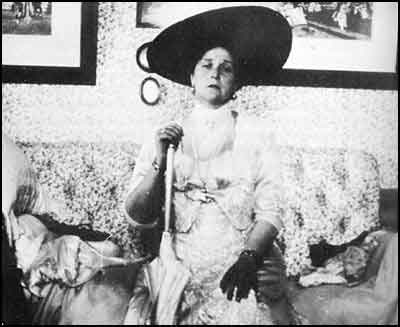
The Empress was strict with her children and taught them to live modestly. Like in any big family clothes of the elder children passed to the younger ones. In Finland when they were on the islands her children wore simple cotton dresses. If they had survived in the revolution, they would surely have accommodated themselves without difficulty to a very simple life.
The Empress got special assignments for her wardrobe but she never spent the whole sum on herself giving a lot of money to the poor and making donations. Sometimes it happened that when she needed a new dress at last she had not a penny left. They say, she gave much money to Rasputin. As far as I know he didn't get a penny from the Tsar's and Tsarina's purse. He was only given shirts, socks and other things made by the Empress herself or the Grand Duchesses. Sometimes he got some money to pay his fare to go home to Siberia.
The Empress was constantly worried about her daughters' future. She cried bitterly when she thought that they would never be able to get married for love as they belonged to the royal family and their choice of the future husband would always have to be motivated by political or other considerations of the kind. I shall dwell on it later in the chapter dedicated to the Grand Duchesses.
Alexandra Fyodorovna had her own secretary, Count Rostovtsev. He was in charge of the Tsarina's office. That office registered all the incomes and expenditures of the official sums.
I know that the Tsarina spent many thousands of her personal sums on the poor but she always tried to keep it secret. In the Crimea the Empress often donated money for the treatment of patients of the Crimean sanatoria and she asked me to help her in doing that.
The Empress was sincerely sorry for those who were sick and even cried when she thought of them. Many people whose health was restored thanks to her help blessed her name. I had kept a lot of letters containing this information but they were all lost during the revolution.
The Empress put a lot of energy into the organization of workhouses all over Russia. Her idea was to help people by giving them jobs. And many unemployed got jobs in those workhouses and those who were not skilled to do any work were taught some craft. Those workhouses were especially helpful in the years of famine.
The Tsarina organized a nurses' college in Tsarskoe Selo where girls and young mothers were taught to look after children and the sick. Some colleges in St. Petersburg which were called "patriotic schools" were patronized by the Empress. I should also mention the industrial college founded by the Empress for the Russian peasant girls. After finishing that college the girls returned home to Russia's most distant places and became teachers of needle-work. On leaving school the girls got all the necessary equipment for their work. The Empress often visited that school and its headmistress visited the Empress from time to time to listen to the Empress's orders and advice. Sometimes I found the Empress and Mrs. Schneider on their knees making a design for a mat. The Empress had a good feeling for art. For example, the director of the Imperial Porcelain Factory often brought patterns of designs for the Empress to improve and correct them.
The Empress seldom wished to be in the company of her maids-of-honour with the exception of Princess Baryatinskaya at the beginning of her reign and Princess Orbeliani. They were her friends. She was always just to all those who served her but she wanted them to be absolutely truthful - even a very innocent lie could make her angry. She was not capable of pretending and false smiles and never tried to charm the crowd. My father used to say: "A cup of tea could have saved the situation" - he meant that if the Empress hadn't been so unsociable and had arranged receptions from time to time she would have enjoyed greater popularity. She lacked ingenuousness that usually fascinates the crowd.
Please send your comments on this page and the Time Machine to boba@pallasweb.com
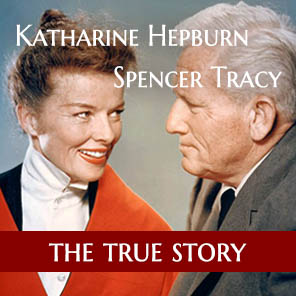
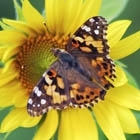



 Imperial Bedroom
Imperial Bedroom Portrait Hall
Portrait Hall Mauve Room
Mauve Room Maple Room
Maple Room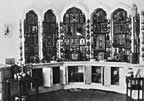 Aleksey's Bedroom
Aleksey's Bedroom Nicholas's Study
Nicholas's Study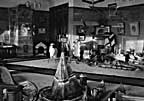 Aleksey's Playroom
Aleksey's Playroom Formal Reception
Formal Reception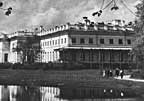 Balcony View
Balcony View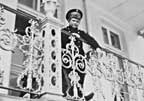 Aleksey- Balcony
Aleksey- Balcony Children-Mauve
Children-Mauve Nicholas's Bathroom
Nicholas's Bathroom Alexandra- Mauve
Alexandra- Mauve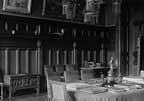 Nicholas's Reception
Nicholas's Reception Tsarskoe Selo Map
Tsarskoe Selo Map